Content Management System for ABC Company TechnoPub Capstone Project Document
Introduction
Electronic magazines and newspapers in the World Wide Web have gained great popularity in the past two years. Nearly every major magazine and newspaper has a website, where either some selected or all of the articles can be read. Accessing such resources became a part of everyday life for the average people of this generation.
According to Marinacomeaux (2016), online publishing is the issuing of books, magazines, information, and material electronically instead of a paper. The online publishing process is not much different from the traditional paper-based publishing process, except that it does not need any offset printing press, to print out the products.
Technopacer is a school-based publisher of ABC Company – Campus, that uses a manual process in terms of the publishing school paper. This process took much time to produce and published which can lead to delay in the distribution of the publication.
Hence, the observation leads the proponents to develop a Content Management System for ABC Company Technopacer. It is a flexible type of system capable being accessed via web or mobile through the user’s desktop, laptop, tablet and smartphone.
Background of the study
The Technopacer, the Junior Technopacer of the College and Secondary Department and the Aquarians of ABC COMPANY , Binalbagan respectively are the official student publications under the supervision of the Information and Publication Unit. These are run by the students staffs, assisted by the faculty adviser. These college publications developed the students resources in gathering, writing and publishing (Student Handbook, 2016 – 2017).
The Technopacer remains to do its function manually in terms of publishing. According to one of the Technopacer writers, an organization should publish the school paper before the end of the school year, while the newsletter must be distributed quarterly. But it happens that the group distributes their works on the opening of classes year aer then newsletter is now thrice a year when it published causing delays and inefficient distribution. Thus, the proponents developed a Content Management System in which the staff writers and editors can add, edit, delete and published articles online without the burden of traditional publication delay and reaches far more students with accessed to the system.
Statement of the Objective
This study aims to develop a Content Management System for the Technopacer Organization that can manage article content in an effective way in terms of posting announcements, writing, adding, editing, and publishing of articles online.
Specifically the study aims to:
- Develop a Content Management System for ABC Company – Technopacer Organization that can:
- automatically publish, manage, update, and edit articles online,
- provide a platform for reviewing, verifying and archiving of news articles and literary works,
- post announcements regarding the updates of the Organization; and
- enable the user to give comments in a particular articles.
- evaluate the system using the standard instrument of ISO/IEC 25010:2011 System and Soware Quality Requirements and Evaluation in terms of Functional Suitability; Performance Efficiency; Compatibility; Usability; Reliability; Security; Maintainability; and Portability.
Conceptual Framework
A visual presentation in a graphical process of Content Management System framework in which it states the main process of the system.
Scope and Limitation of the Study
This section stated the scope and limitation of Content Management System for ABC Company Technopacer Publication.
Scope
The focus of this study was to manage article content of the school publication specifically in terms of publishing literary articles, newsletter and publication announcements. This study provided a platform for the editor and the staff writer to automatically published their write-ups online. The study will helped the staff writers as well as the editor in chief and the technical consultant to work and published in a real-time process. Also, this study will provide comments that will help the staff writer to evaluate their works. Furthermore, this study was beneficial to those students who didn’t get limited copies of the school paper by simply accessing the Online School Publication. In addition, it was an accessible website for all the people inside and even outside of the school campus.
Limitation
This study was only intended to ABC Company Technopacer Publication. The study only focused on the management of a particular category such as; news articles, literary articles, opinion articles, sports articles, feature articles, and publication announcements. The study not cover the number of printed newsletters, magazines and literary folio that the organization published.
Significance of the Study
The result of this study was beneficial to the following:
Administration. The system will aid the organization to minimize the financial expense of the publication and help the management, performance, and proficiency of work.
Future researchers. The system will help the future researcher to be aware and knowledgeable of the process involved in this system and can be the basis of their studies.
Publication Adviser. The system can help the adviser to supervise and review the operation of work of the student staff.
Proponents. The system can help the researcher to understand the process of publishing articles.
User. The system can allow the user to access, stay connected and update of what is happening inside the campus.
Technopacer Staff. The system can help the Technopacer Staff to work efficiently and publish the article in a real-time process.
Definition of Terms
The terms used in this study was defined conceptually and operationally to further understand the system.
Articles. Conceptually, an article can be as short as a paragraph or two or as long as several dozen pages. Articles can address any topic that the author decides to explore and can reflect opinion, news, research, reviews, instruction, nearly any focus. Because of their relative brevity, articles typically are used to provide up-to-date information on a wide variety of topics (Atilano, 2012).
Operationally, this refer to the published write – ups of the different Technopacer Staff.
Content Management System (CMS). Conceptually, is a computer application that allows publishing, editing, modifying, organizing, deleting and maintining content from a central interface (Srivastov, et. al 2016).
Operationally, this system helps the technopacer writer to manage the content of published articles.
Electronic. Conceptually, Electronics deal with electrical circuits that involve active electrical components such as vacuum tubes, transistors, diodes, integrated circuits, associated passive electrical components and interconnection technologies (Aishwarya J Jogul, 2017).
Operationally, this refer to the process or used in a system of operation that involves the control of electric current by various devices.
Interactive. Conceptually, an interactive is simply a site that allows visitors to interact with the content in some way (Heide Cool, 2015). Operationally, this refer to the operation of the system as its response to the user’s manipulation.
Online Publishing. Conceptually, Online Publishing is the use of digital technology to replace written material so that it can be disseminated and accessed through computerized electronic devices (Wolfe, 2018).
Operationally, this refers to the format of distribution of the magazine by means of computer network.
Technology. Conceptually, Technology is a body of knowledge devoted to creating tools, processing actions and the extracting of materials (Verma, 2018).
Operationally, this term will used as a technical tool in publishing online articles. Easy to access through technical devices like laptops, tablets and smartphones.
Review of Related Literature
This chapter primarily presents the different researches and other literary form both foreign and local researchers. It focuses on several aspects that will help in the development of an Online School Publication for ABC Company .
Local Studies
I-Tech Computer Education Content Management System
The i-Tech Computer Education Content Management System (CMS) help the i-Tech school from having accurate information about the number of students and to locate the requirements about the enrollment easily. The system manages the announcement of the school and current activities about the school. The system also updated their current student for their future plan. It also helps the institution to promote and advertise the school into the public to market the service that they offered to make the school much more competitive from other institution by using modern technology. It also makes the work of the office personnel easy and fast. This system also helps the incoming students get or know the requirements easily and post to inform the public faster (Rasay et.al, 2016).
WAY FINDING INFORMATION SYSTEM.
The use of the system is to add, update the employee’s information, can have the access to the services offered in a certain office and can upload the image of the landmark. This system is a program that can be used in data distribution and is intended to set a trend, contribute to the Technological advancement of the People’s House and to help the Company in providing information and displaying exact route of location to its client in a more efficient way (Jimena et.al, 2016).
ABC COMPANYElectronic Bulletin Board System.
Electronic Bulletin Board System (EBBS) is a web – based system that can give information to the student’s faculty and staff even the visitors of ABC Company Fortune – towne Campus. The system improved the manual process of disseminating information’s like upcoming events, school newest updates, posting a lost and found items and allows the user to post information where the admin is the one who is in charge of the system maintenance and be able to generate reports. The system allows the Administrator to update upcoming announcements or previous announcements of the school each day and features backup/restoring of data (Aguilar et.al, 2018).
Foreign Related Studies
Electronic Prescribing
E-prescribing allows providers in the ambulatory care setting to send prescriptions electronically to the pharmacy and can be a stand-alone system or part of an integrated electronic Health Record System. E-prescribing has allowed prescribers to electronically send patient’s prescription information to pharmacy computers. Additionally, connecting physician and pharmacy systems has reduced paperwork and the associated mistakes that may occur from reliance on handwritten notes. This change has produced time and cost savings for all parties involved. Electronic health Record systems include patient information such as clinical notes, laboratory orders and results, and clinical decision support (CDS) functions that stand-alone systems do not provide. When e-prescribing is part of an EHR system, providers are able to access all patient information, not just prescription information (Amber Porterfield et.al, 2014).
Journal of Electronic Publishing.
The Journal of Electronic Publishing (JEP) is an open access journal that publishes research and discussion about contemporary publishing practices, and the impact of those practices upon users. Journal of Electronic Publishing aspires to document changes in publishing, and in some cases to stimulate and shape the direction of those changes. The articles present innovative ideas, best practices, and leading-edge thinking about all aspects of publishing, authorship, and readership. The editor and publisher are committed to presenting wide-ranging and diverse viewpoints on contemporary publishing practices, and to encouraging dialogue and understanding between key decision-makers in publishing and those who are affected by the decisions being made (Amber Porterfield, 2014).
Electronic Delivery Book: Structured Database Enables Analysis of Perinatal Risk Factors.
The Electronic Delivery Book (EDB), an electronic information system was developed in cooperation with the obstetricians, midwives, and neonatologist for the University Hospital in Brno. The main aim was to create structured electronic documentation of selected delivery – related parameters based on the existing paper – based documentation. The system contains information from the different stages of delivery; parameters of the pregnancy, medications/interventions during the birth, outcome measures for the newborn(s), and primary attributes from neonatology (Michal Huptych, 2018).
Related System
Synthesis
The related system served as a foundation for developing a Content Management System for ABC Company that will help the Technopacer staff(s) to add, edit, delete, update and published articles online. The i – Tech Computer Education Content Management System is restricted to download the files issued but the system can publish articles online, upload images & videos, update the latest news and articles then it was implemented on a web-based system. On the other hand, the Wayfinding Information System as mentioned above is only supporting the upload images & videos, can update the latest news and articles and then it is a web-based system. The Electonic Bulletin Board System is just like the Way Finding Information but it doesn’t support downloading any files and cannot publish articles online since it is assigned in a Local Area Network.
The foreign studies also help the developer to compare their system features to the existing system. The Electronic Prescribing was implemented on a web-based. The system is restricted to download the files that were issued, cannot publish articles online, does not support the upload of media and cannot update the latest news and articles. Moreover, the Journal of Electronic Publishing is allowed to publish articles online, upload images & videos, can update the latest news and be implemented on a web-based. But the system does not download the file issued. Additionally, the Electronic Delivery Book System can update the latest news and be implemented on a web-based. But just like the other system mentioned before, the system cannot download the file issued, cannot publish articles online and cannot upload media.
Methodology
This chapter presents the methods and procedures in making the Content Management System for ABC COMPANY TechnoPub.
The proponents decided to follow the standard Prototyping Model to evaluate and discuss the possible solutions to the problems being identified. This model helped the proponents to understand the system being developed, identify the errors ahead of time and give quick feedback of the user that can lead to a better solution. The prototype model is composed of six (6) phases namely; Requirement Analysis, Design, Building and Prototyping, Evaluation of Customer, Refining Prototyping and Final Product.
Throughout the Prototyping model, the soware development team, clarify requirements and/or design elements that generate mockups and prototypes of screens, reports, and processes. When a prototype is generated, the developer produces the minimum amount of code necessary to clarify the requirements or design elements under consideration. No effort is made to comply with coding standards, provide robust error management, or integrate with other database tables or modules (Amir Ghahrai, 2018).
Requirement Analysis
In this phase, proponents gathered requirements, interview the technopacer staff and discuss the process of how the system would be operating. The proponents gathered some important information that is relevant to the development of the system. The members studied the existing systems both from local and foreign studies as a basis for the proposed system in analyzing the appropriate use of data. Aer gathering the needed information, proponents started to build a database for the system.
In this phase, proponents draed an initial design that is related to the proposed system, but this initial design does not contain significant features of the system. The proponents focused on the design of Architectural Diagram, Soware Development Life Cycle Model used Data flow Diagram, Entity Relationship Diagram, and Conceptual Framework.
Building and Prototyping Phase
In this phase, the developer developed a functional database that can add, edit and delete some articles. The proponents sketch the final design of the system that will serve as a guide in developing the system. The developer started to develop a system using different programming languages that will relate to the system design.
In this phase, the proponents will invited several people from the Technopacer Organization as well as the students of ABC COMPANY – to test and rate the system. The proponents demonstrated the system to each respondent for a better understanding of its functionality.
If technopacer people were not satisfied with the end product, proponents will look for another system design. Clarify the suggestions and comments of each respondent.
In the design phase, proponents draed another design that is still related to the proposed system and improved functions and layouts of the primary design.
In building and prototyping, the developer once more reviews the system to enhance several functions. Proponents will use an improved design which will serve as a guide in developing a new system design.
In Customer Evaluation, proponents invited several people from the Technopacer Organization and students from ABC COMPANY – to test and rate the system. Proponents demonstrated the system for each respondent to a better understanding of its functionality. Aer an evaluation, respondents will tested and rated the system. Coding and testing were then observed to fix several bugs.
In this phase, the proponents developed a Content Management System for ABC Company Technopacer Publication. User training was completed, user documentation was delivered and the post-implementation was reviewed. Upon completion of the phase, the system is in steady-state production. The system must be well – kept guaranteeing that it is working well. And the system should have maintenance of every three (3) months.
Development Environment
Front End
HTML (Hypertext Mark – up Language)
A standard formatting mechanism for publishing document on the World Wide Web. It is a non-proprietary format based on standard generalized Markup Languagel (SGML), and can be created and processed by a wide range of tools, from simple plain text editors to sophisticated WYSIWYG authoring tools (Prytherch, 2016).
The system used HTML code to ensures the proper formatting of text and images in the Internet browser that may display them as they are intended to look.
CSS (Cascading Style Sheets)
A style sheet mechanism that allows designers to attach style (for example; fonts, colours, and spacing) to web pages without having this information coded into each document (Prytherch, 2016).
In this programming language the proponents used this for draing preliminary and final design of the system. It gives different color to the system.
JQuery
Is a library written in JavaScript which is primarily about DOM manipulation. It lets you find parts of a web page and make changes to them with very little code. It’s wildly popular and is used extensively across the Internet. It also forms the basis of other larger frameworks (Johnson, 2014).
JavaScript
JavaScript is a scripting language concentrated on client-side form validation and working with images on webpages to provide rudimentary, although helpful, interactivity and feedback to the visitor. When a visitor to a website filled in a form, JavaScript instantly validated the contents of the web form rather than making a round-trip to the server (Suehring, 2013).
Javascript use in this system to interact with the user in validating their information or when data is entered in its specific forms.
Back End
PHP
PHP is a server-side scripting language that is used to develop Static websites or Dynamic websites or Web applications. PHP stands for PHP:Hypertext Pre-processor. PHP scripts can only be interpreted on a server that has PHP installed. The client computers accessing the PHP scripts require a web browser only. A PHP file contains PHP tags and ends with the extension “.php”. (Guru99, 2019).
This programming language is being devised to handle the different codes from other programming languages.
MySQL
Is a freely available open source Relational Database Management System (RDBMS) that uses Structured Query Language (SQL). SQL is the language for adding, accessing and managing content in a database. It is most noted for it’s quick processing, proven reliability, ease and flexibility of use (Nikolov, 2018).
This language serves as the storage of all the data inside this proposed System, ABC COMPANYOnline School Publication. Moreover, this language serves as importing instruments to make the system work uses chrome and another relevant platform.
Technical Feasibility
Hardware Specification
Table 2.0 System’s Development Hardware
| Name | Specification | |
| Processor | AMD A6-9225 | |
| RAM | 4Gb | |
| Hard Disk | 500 Gb | |
| Video Card | 2 Gb | |
| Graphics Card | AMD Radeon |
Implementation
Table 2.1 System’s Development Hardware
| Name | Minimum | Recommended |
| Processor | Intel Celeron dual core | Intel Pentium, Core i series |
| RAM | 512 Mb | 1Gb or more |
| Hard Disk | 320 Gb | 400Gb or more |
| Video Card | 512 Mb | 1 Gb or more |
Soware Specification
Development
Table 2.2 System’s Development Soware
| Name | Soware | Version |
| OS ( Operation System) | Microso Windows | 7 |
| Programming language/soware | PHP,HTML,JavaScript/Sublime | PHP 7.3, HTML5, Sublime text ver.3 |
| Database | MySQL | MySQL i |
Implementation
Table 2.3 System’s Implementation Soware
| Name | Minimum | Recommended |
| OS (Operation System) | Windows 7 | Windows 8 or latest |
| Web browser | Google chrome, Firefox | Google Chrome |
System Architecture
Figure 3.0 shows the System Architecture of Content Management System for ABC COMPANY TechnoPub.
Feasibility Schedule
The feasibility schedule contains the record of the amount of time the proponents spent on the system.
Gantt Chart
The following tables show the Ghantt chart of the tasks that have been done by the proponents with the time allotted for the establishment of the entire system.
Table 3.0 Requirement Analysis Phase.
| WORK BREAKDOWN | |||||
| TASK | ASSIGNED TO |
PROGRESS | START | DURATION | END |
| Phase 1 – Requirements Analysis | |||||
| gather necessary data for document and database | all members | 100% | 12/9/18 | 4 | 12/13/18 |
| Interview the technopacer staff | all members | 100% | 12/14/18 | 5 | 12/19/18 |
| working on documentaion | Perez & Matinong | 100% | 12/20/18 | 17 | 1/06/19 |
| consultation of document in capstone adviser | Perez & Matinong | 100% | 1/07/19 | 1 | 1/08/19 |
| Revision of document | Perez & Matinong | 100% | 1/08/19 | 12 | 1/20/19 |
| WORK BREAKDOWN | |||||
| TASK | ASSIGNED TO |
PROGRESS | START | DURATION | END |
| Phase 2 – Design Phase | |||||
| Working on database | all members | 100% | 01/9/19 | 4 | 1/13/19 |
| Interview the technopacer staff | all members | 100% | 01/14/18 | 3 | 01/17/19 |
| working on documentation | Perez & Matinong | 100% | 01/18/18 | 7 | 1/25/19 |
| Dra an initial design | Perez & Matinong | 100% | 01/26/19 | 2 | 1/28/19 |
| Consultation of documents to capstone adviser. | Perez & Matinong | 100% | 02/07/19 | 1 | 02/08/19 |
Table 3.2 Building and Prototyping Phase
| WORK BREAKDOWN | |||||
| TASK | ASSIGNED TO |
PROGRESS | START | DURATION | END |
| Phase 3 – Building and Prototyping | |||||
| Develop a functional database | Lamirez | 100% | 02/9/19 | 2 | 02/11/19 |
| Develop back end of the system using different languages | Lamirez & Perez | 100% | 02/12/19 | 3 | 01/15/19 |
| Consultation of database to capstone coordinator | Lamirez | 100% | 02/16/18 | 1 | 02/17/19 |
| Working on chapter 3 | Perez & Matinong | 100% | 02/18/19 | 8 | 02/26/19 |
| Working on different tables and figures. | Perez & Matinong | 100% | 02/27/19 | 2 | 02/28/19 |
| Consultation of documents to capstone adviser. | Perez & Matinong | 100% | 02/28/19 | 1 | 03/01/19 |
Table 3.3 Evaluation of Customer
| WORK BREAKDOWN | |||||
| TASK | ASSIGNED TO |
PROGRESS | START | DURATION | END |
| Phase 3 – Evaluation of Customer | |||||
| Present, demonstrate and rate the system to the Technopacer | All members | 100% | 10/29/19 | 2 | 10/31/19 |
| WORK BREAKDOWN | |||||
| TASK | ASSIGNED TO |
PROGRESS | START | DURATION | END |
| Phase 4 – Refining Prototype | |||||
| Clarify suggestions and comments on the system | Lamirez | 100% | 10/31/19 | 1 | 11/2/19 |
| Improve functions fo the system | Lamirez | 100% | 11/03/19 | 3 | 11/07/19 |
| Test and rate the system | All members | 100% | 11/08/19 | 1 | 11/08/19 |
| WORK BREAKDOWN | |||||
| TASK | ASSIGNED TO |
PROGRESS | START | DURATION | END |
| Phase 5 – Final Product | |||||
| Deployment | All members | 100% | 11/13/19 | 30 | 12/13/19 |
| Development Cost | Quantity | Unit | No. of Months | Cost | Total Amount |
| Computer | 1 | Laptop | N/A | ₱ 17,000.00 | ₱ 17,000.00 |
| Programmer | 1 | N/A | 10 | ₱ 10,000.00 | ₱ 100,000.00 |
| Project Manager | 1 | N/A | 10 | ₱ 8,000.00 | ₱ 80,000.00 |
| Researcher | 1 | N/A | 10 | ₱ 5,000.00 | ₱ 50,000.00 |
| Subtotal | ₱ 247,000.00 | ||||
The table 3.6 shows the development cost of the proposed system. It is to determine whether the publication can gain benefit from the system.
| Operational Cost | Quantity | Unit | No. of Months | Cost | Total Amount |
| Electricity | 1 | N/A | 10 | ₱ 217.20 | ₱ 2,172.00 |
| Monitor | 1 | N/A | N/A | ₱ 2,400.00 | ₱ 2,400.00 |
| System Unit | 1 | N/A | N/A | ₱ 4,700.00 | ₱ 4,700.00 |
| Keyboard | 1 | N/A | N/A | ₱ 280.00 | ₱ 280.00 |
| Mouse | 1 | N/A | N/A | ₱ 210.00 | ₱ 210.00 |
| AVR | 1 | N/A | N/A | ₱ 450.00 | ₱ 450.00 |
| Internet | 1 | N/A | 10 | ₱ 1,899.00 | ₱ 18,990.00 |
| Subtotal | ₱ 29,202.00 | ||||
The table 3.7 shows the operational cost of the proposed system. The cost includes the expenditures in operating the system.
Table 3.8 Total Development Cost
| Name of Cost | Total Amount |
| Developmental Cost | ₱ 247, 000.00 |
| Operational Cost | ₱ 29, 202.00 |
| Total Cost | ₱ 276, 202 |
The table 3.8 shows that the total amount of development and operational cost of the researched system
Benefits of the System (Annually) Amount/Value
Table 4.0 Benefits of the System
| Benefit | Quantity | Unit | No. of Months | Cost | Total Amount |
| work management | N/A | N/A | 6 | 8, 000.00 | ₱ 48, 000.00 – |
| Efficiency of articles dissemination | N/A | N/A | 6 | 6, 000.00 | ₱ – 36, 000.00 |
| Minimize the use of paper and ink in terms of publishing | N/A | N/A | 6 | 220.00 | ₱ 1,320.00 – |
| Data accuracy | N/A | N/A | 6 | 5,000.00 | ₱ – 30,000.00 |
| TOTAL BENEFIT | ₱ 115,320.00 – | ||||
The table 4.0 above shows the computed benefits of the researched system to the company. The proponents have researched on what are presumed amounts or value of each item that will benefit the company over its traditional method per year.
The table 4.1 above shows that the cost benefit analysis of the system. With the use of formula that can bee seen above the table, the researchers were able to reach the following results; Payback period was 3.1518 for 3 year, 2 months and 25 days. With the return of investment (ROI) 38%.
Entity Relationship Diagram
Figure 4.0 above shows the Entity Relationship Diagram that graphically illustrate the system’s entities and the relationships between those entities.
Context Diagram
Figure 5.0 shows the Context Diagram or level 0 of data flow diagram that generalizes the function of the entire system in relationship to external entities.
Data flow Diagram
Figure 6.0 shows the Data Flow Diagram level 1 in which the main process are broken down into subprocesses that can then be analyzed and improved.
Data Dictionary
| Field Type | Data Type | Field Length | Constraint | Description |
| Editors_id | int | 11 | Primary key | Uniquely identify the editor’s id |
| Username | varchar | 30 | Editors username | |
| Password | Specifies the editors password | |||
| Editor_firstname | varchar | 30 | Specifies editor first name | |
| Editor_middlename | varchar | 30 | Specifies editor middle name | |
| Editor_lastname | varchar | 30 | Specifies editor last name | |
| Editor_email | varchar | 30 | Specifies email address of editor | |
| Editor_contact# | int | 11 | Specifies the contact number of editor | |
| Editor_status | varchar | 30 | Specifies the editor’s status | |
| Role_id | int | 11 | Foreign key | Foreign key of role id |
Presentation, Analysis, And Presentation Of Data
This chapter shows the findings, analysis, and interpretation of data gathered whose main objective is to found out the expectations and perceptions of the users. It is essential to analyze the data collected to test the hypothesis and meet the objectives of the study.
Presentation
The proponents explained and demonstrated the system’s functionality to be evaluated by the selected respondents. Present data and documents were studied to meet the criteria communicated in the statement of the objectives. The ratings that was given by the respondents was based on the ISO ISO/IEC 25010:2011 Systems and Soware Quality Characteristics form to determine the level of acceptability of the proposed system.
Data Analysis
This section presents the analysis and interpretation of data collected from the respondents. The analysis and interpretation of data was carried out into two parts. It was based on the results of a questionnaire which deals with quantitative analysis of data.
Characteristics of the Respondents
Table 5.0 Frequency of Respondents
| Respondents
Technopacer staff Students Total |
Frequency
5 30 35 |
The evaluation of the system presented the detailed assessment done by the Technopacer staff and the students. The proponents will demonstrated and explained the functionality of the system and was evaluated and tested by the respondents based on the evaluation form.
Table 5 presented the number of respondents in the study. The proponents got a total of 35 respondents from the Technopacer Staff and students that were asked to be the users of the proposed system.
The collected data were tabulated and analyzed. To interpret the result, the proponents used purposive convenience sampling wherein applicable to both qualitative and quantitative studies, although it is most frequently used in quantitative studies (Ilker Etikan, et., al, 2015). The proponents used this in selecting respondents because it was convenient and they were easily accessible to the proponents.
Interpretation of Data
Table 5.1 Interpretation of Data
| ISO/IEC 25010:2011 Systems and Soware Quality Characteristics | Mean | Description | |
| GRAND MEAN | 4.29 | Excellent | |
| A. | Functional Suitability (as a whole) | 4.39 | Excellent |
| a.1 Functional Completeness | 4.41 | Excellent | |
| a.2 Functional Correctness | 4.28 | Excellent | |
| a.3 Functional Appropriateness | 4.47 | Excellent | |
| B. | Performance Efficiency (as a whole) | 4.29 | Excellent |
| b.1 Time Behavior | 4.28 | Excellent | |
| b.2 Resource Utilization | 4.31 | Excellent | |
| b.3 Capacity | 4.28 | Excellent | |
| C. | Compatibility (as a whole) | 4.28 | Excellent |
| c.1. Co-existence | 4.34 | Excellent | |
| c.2 Interoperability | 4.22 | Excellent | |
| D. | Usability (as a whole) | 4.28 | Excellent |
| d.1 Appropriateness Recognizability | 4.38 | Excellent | |
| d.2 Learnability | 4.16 | Very Satisfactory | |
| d.3 Operability | 4.19 | Very Satisfactory | |
| d.4 User error Protection | 4.19 | Very Satisfactory | |
| d.5 User Interface Aesthetics | 4.38 | Excellent | |
| d.6 Accessibility | 4.41 | Excellent | |
| E. | Reliability (as a whole) | 4.29 | Excellent |
| e.1 Maturity | 4.50 | Excellent | |
| e.2 Availability | 4.22 | Excellent | |
| e.3 Fault Tolerance | 4.31 | Excellent | |
| e.4 Recoverability | 4.13 | Very Satisfactory | |
| F. | Security (as a whole) | 4.26 | Excellent |
| f.1 Confidentiality | 4.28 | Excellent | |
| f.2 Integrity | 4.09 | Very Satisfactory | |
| f.3 Non-repudiation | 4.22 | Excellent | |
| f.4 Accountability | 4.28 | Excellent | |
| f.5 Authenticity | 4.41 | Excellent | |
| G. | Maintainability (as a whole) | 4.28 | Excellent |
| g.1 Modularity | 4.19 | Very Satisfactory | |
| g.2 Reusability | 4.34 | Excellent | |
| g.3 Analyzability | 4.25 | Excellent | |
| g.4 Modifiability | 4.28 | Excellent | |
| g.5 Testability | 4.34 | Excellent | |
| H. | Portability (as a whole) | 4.29 | Excellent |
| h.1 Adaptability | 4.34 | Excellent | |
| h.2 Installability | 4.25 | Excellent | |
| h.3 Replaceability | 4.28 | Excellent | |
The overall impression of the Content Management System for ABC Company Technopacer Publication was “Excellent” with a grand mean of 4.29. This implies that the system meets the requirements and functionality as required. Also, this conforms to a high standard based on the ISO/IEC 25010:2011.
As to the level of functional suitability of the Content Management System for ABC Company Technopacer Publication when taken as a whole, the level of functional suitability was “Excellent” with the mean score of 4.39.
The level of functional suitability of the Content Management System for ABC Company Technopacer Publication when classified according to the categories of functional completeness with the result of “Excellent” as revealed in the mean score of 4.41, when the functional correctness is considered, the result was “Excellent” as revealed in the mean score of 4.28, and when the functional appropriateness is considered, the result was “Excellent” as revealed in the mean score of 4.47.
As to the level of Performance Effiency of the Content Management System for ABC Company Technopacer Publication when taken as a whole, the result was “Excellent” with the mean score of 4.29.
The level of performance efficiency of the Content Management System for ABC Company Technopacer Publication when classified according to the categories of time behavior with the result of “Excellent” as revealed in the mean score of 4.28, when the resource utilization is considered, the result was “Excellent” as revealed in the mean score of 4.31, and when the capacity is considered, the result was “Excellent” as revealed in the mean score of 4.28.
As to the level of Compatibility of the Content Management System for ABC Company Technopacer Publication when taken as a whole, the level of functional suitability was “Excellent” with the mean score of 4.28.
The level of compatibility of the Content Management System for ABC Company Technopacer Publication when classified according to the categories of co-existence with the result of “Excellent” as revealed in the mean score of 4.34, when the resource utilization is considered, the result was “Excellent” as revealed in the mean score of 4.31, and when the interoperability is considered, the result was “Excellent” as revealed in the mean score of 4.22.
As to the level of Usability of the Content Management System for ABC Company Technopacer Publication when taken as a whole, the level of functional suitability was “Excellent” with the mean score of 4.28.
The level of usability of the Content Management System for ABC Company Technopacer Publication when classified according to the categories of appropriateness recognizability with the result of “Excellent” as revealed in the mean score of 4.38, when the learnability, operability and user error protection is considered, the result was “Very Satatisfactory” as revealed in the mean score of 4.19, when the user interface aesthetics is considered, the result was “Excellent” as revealed in the mean score of 4.38, when the accessibility is considered, the result was “Excellent” as revealed in the mean score of 4.41.
As to the level of Reliability of the Content Management System for ABC Company Technopacer Publication when taken as a whole, the result was “Excellent” with the mean score of 4.29.
The level of reliability of the Content Management System for ABC Company Technopacer Publication when classified according to the categories of maturity with the result of “Excellent” as revealed in the mean score of 4.50, when the availability is considered, the result the result was “Éxcellent” as revealed in the mean score of 4.22, when the fault tolerance is considered, the result was “Excellent” as revealed in the mean score of 4.31, and when the recoverability is considered, the result was “Very Satisfactory” as revealed in the mean score of 4.13.
As to the level of Security of the Content Management System for ABC Company Technopacer Publication when taken as a whole, the level of functional suitability was “Excellent” with the mean score of 4.26.
The level of security of the Content Management System for ABC Company Technopacer Publication when classified according to the categories of confidentiality with the result of “Excellent” as revealed in the mean score of 4.28, when the integrity is considered, the result the result was “Very Satisfactory” as revealed in the mean score of 4.09, when the non-repudiation is considered, the result was “Excellent” as revealed in the mean score of 4.22, and when the accountability is considered, the result was “Excellent” as revealed in the mean score of 4.28, when the authencity is considered, the result was “Excellent” as revealed in the mean score of 4.41.
As to the level of Maintability of the Content Management System for ABC Company Technopacer Publication when taken as a whole, the level of functional suitability was “Excellent” with the mean score of 4.28.
The level of maintability of the Content Management System for ABC Company Technopacer Publication when classified according to the categories of modularity with the result of “Very Satisfactory” as revealed in the mean score of 4.19, when the reusability is considered, the result the result was “Excellent” as revealed in the mean score of 4.34, when the analyzability is considered, the result was “Excellent” as revealed in the mean score of 4.25, and when the modifiability is considered, the result was “Excellent” as revealed in the mean score of 4.28, when the testability is considered, the result was “Excellent” as revealed in the means score of 4.34.
As to the level of Portability of the Content Management System for ABC Company Technopacer Publication when taken as a whole, the level of functional suitability was “Excellent” with the mean score of 4.29.
The level of portability of the Content Management System for ABC Company Technopacer Publication when classified according to the categories of adaptability with the result of “Excellent” as revealed in the mean score of 4.34, when the instability is considered, the result the result was “Excellent” as revealed in the mean score of 4.25, when the replaceability is considered, the result was “Excellent” as revealed in the mean score of 4.28.
Summary of Findings, Conclusion and Recommendation
This chapter presents the summary of the work undertaken, the conclusions drawn and the corresponding recommendations based on the data analysis in the previous chapter. The conclusion will be based on the research questions and the results of the study. The summary of these findings will also be explained, as the recommendations will be based on the purpose of the study.
Summary of Findings
This study was taken with the general objective of developing a Content Management System for ABC Company Technopacer Publication through the implementation of an online website in terms of Functional Suitability; Performance Efficiency; Compatibility; Usability; Reliability; Security; Maintainability; and Portability. The findings were discussed according to the categories given based on the questionnaire that served as an instrument for the collection of data.
Total of thirty-five (35) respondents took part in this research. The thirty-five (35) respondents were conducted using a prepared structured questionnaire (User’s Acceptance Survey). The findings of the survey were presented and discussed in Chapter 4.
The findings of the study based on the categories given are as follows:
- Functional Suitability
The respondents’ assessed the proposed system in terms of functional suitability as “Excellent” with a total mean of 4.34.
- Performance Efficiency
The respondents’ assessed the proposed system in terms of Performance Efficiency as “Excellent” with a total mean of 4.29.
- Compatibility
The respondents’ assessed the proposed system in terms of compatibility as “Excellent” with a total mean of 4.28.
- Usability
The respondents’ assessed the proposed system in terms of usability as “Excellent” with a total mean of 4.28.
- Reliability
The respondents’ assessed the proposed system in terms of reliability as “Excellent” with a total mean of 4.29.
- Security
The respondents’ assessed the proposed system in terms of security as “Excellent” with a total mean of 4.26.
- Maintainability
The respondents’ assessed the proposed system in terms of maintainability as “Excellent” with a total mean of 4.28.
- Portability
The respondents’ assessed the proposed system in terms of portability as “Excellent” with a total mean of 4.29.
Overall, the system’s rating has collected a mean of 4.9 that is interpreted as an ‘Excellent” rating. The findings revealed that the majority of the respondents are feeling Excellent with how the system works in terms of its functionalities in meeting the requirements and features needed based on its objectives.
Conclusion
Based on the findings of the study the following conclusions are drawn:
- The developed system which is the Content Management System for ABC Company Tecnopacer Publication was found excellent in functionality in terms of Functional Suitability, Performance Efficiency, Compatibility, Usability, Reliability, Security, Maintainability, and Portability of the system.
- The proponents concluded that the developed system is fully operational and ready to be used by the Technopacer.
- The proponents concluded that it will help the Technopacer staff to assess their composed articles dependent on the remarks and satisfactory rating the clients give.
Recommendations
Based on the aforementioned findings and conclusions presented, the following recommendations are suggested:
- The system shall have proper maintenance for every 5 months to sustain and update its functions and also for the security of its databases.
- The administrator must have an alter history for each article that he/she changed.
- The system should be implemented to lessen the expense of the Technopacer in terms of publishing school papers.
- The future researcher can improve the framework by giving a response catches (heart, thumbs up, wow) and be able to upload multiple media.
Credits
Perez, Divine Grace, P.
Lamirez, Homer, C.
Matinong, Miguel, R.

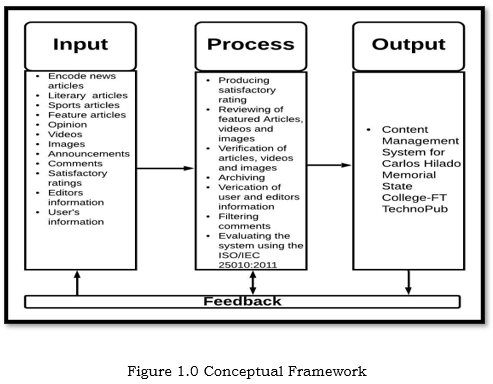
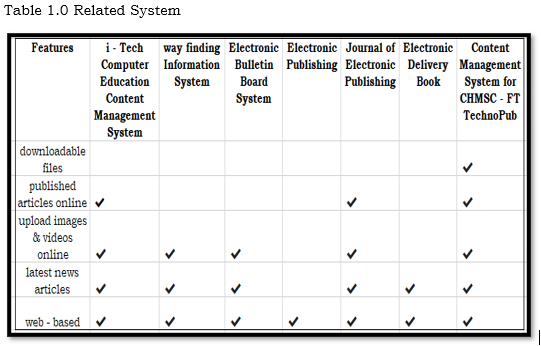
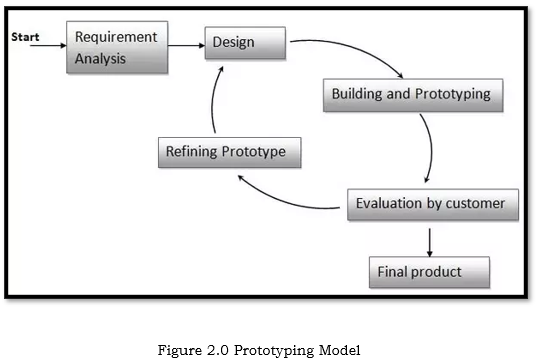

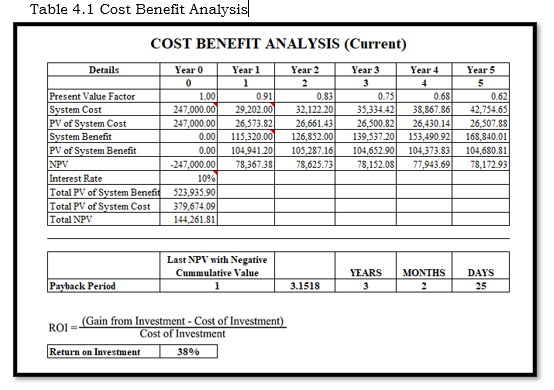

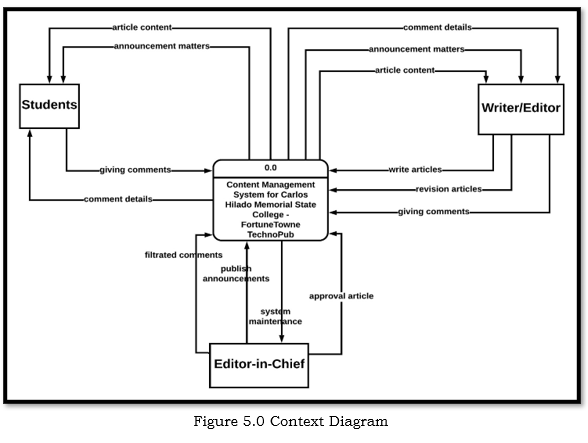
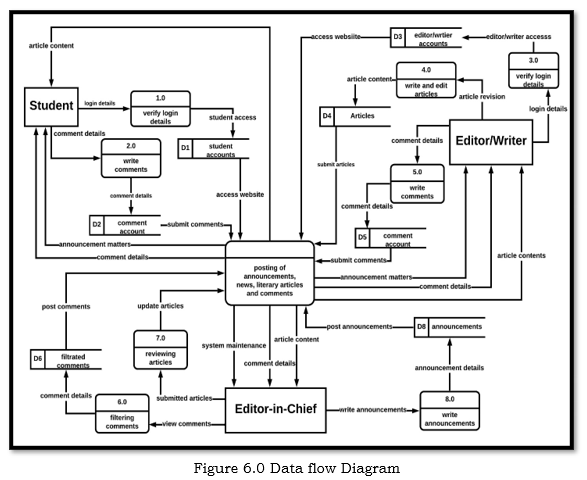
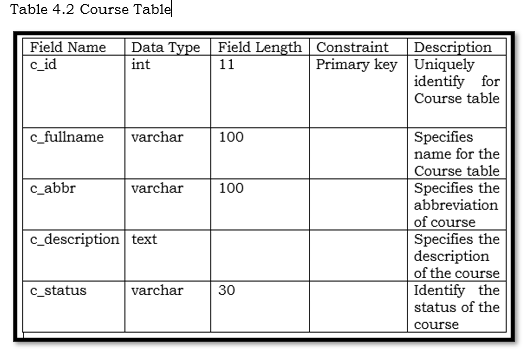

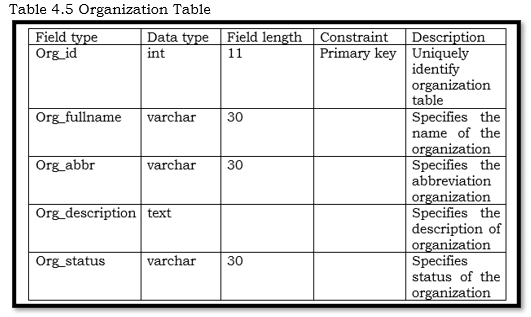
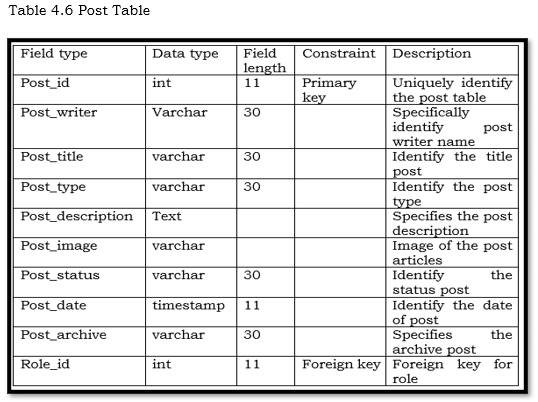

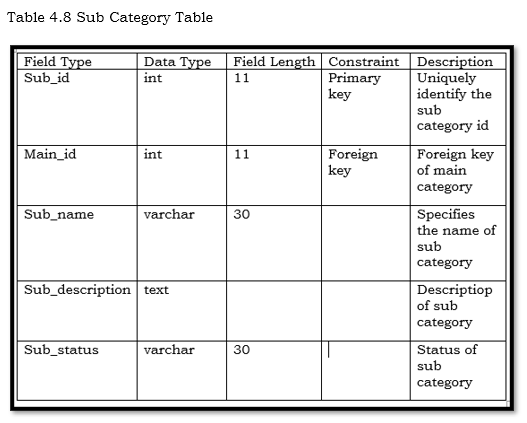

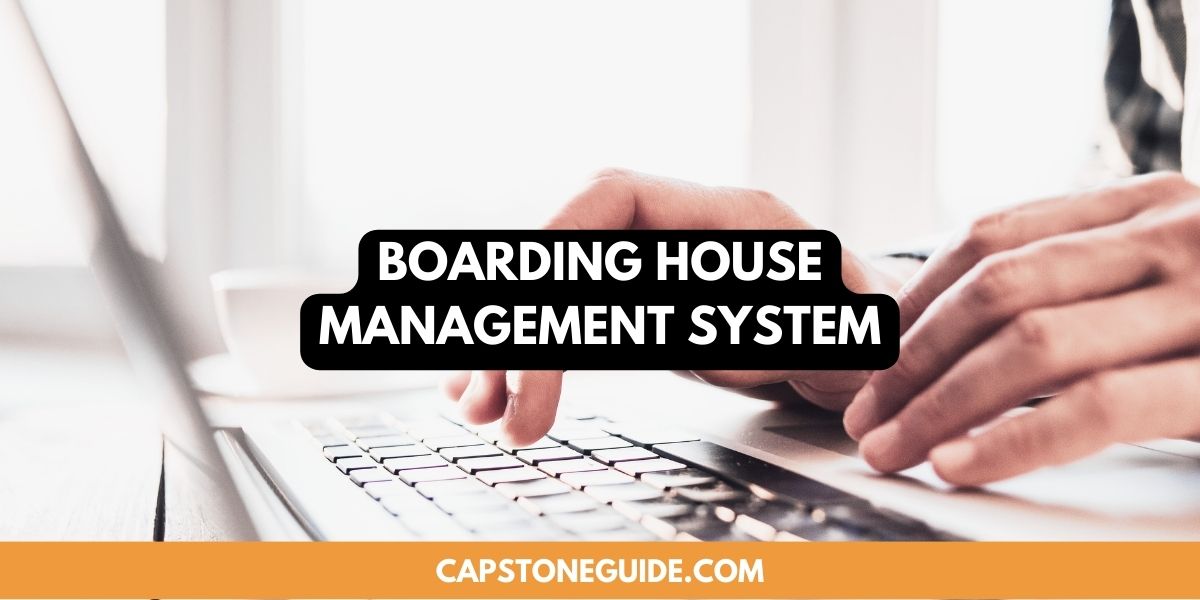


Leave A Comment
You must be logged in to post a comment.